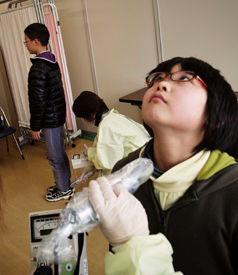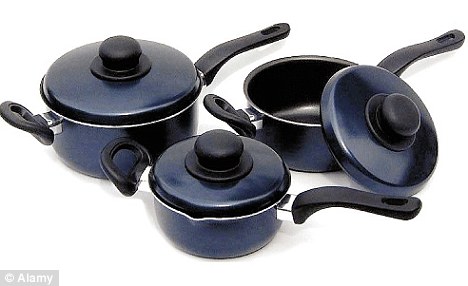OF THE
TIMES

"There is no safe level of radionuclide exposure, whether from food, water or other sources. Period," said Jeff Patterson, DO, immediate past president of Physicians for Social Responsibility. "Exposure to radionuclides, such as iodine-131 and cesium-137, increases the incidence of cancer. For this reason, every effort must be taken to minimize the radionuclide content in food and water."

Environmental cues - in this case, diet - influence genes in mammals from one generation to the next, evidence that until now has been sparse. These insights, coupled with previous human epidemiological studies, suggest that paternal environmental effects may play a more important role in complex diseases such as diabetes and heart disease than previously believed.
Comment: There is one proven technique that can assist you with reducing your stress, calming and focusing your mind, creating better links between body and mind and thus improving your quality of life, increasing a sense of connection with others in your community. It will help you to improve your health, strengthen your immune system, provide you with better impulse control, reduce your inflammation, etc. It will also help you to heal your emotional wounds; anything that may hinder or prevent you from leading a healthy and fulfilling life.
The Éiriú Eolas technique grew out of research conducted by the Quantum Future Group under the direction of Laura Knight-Jadczyk and Gabriela Segura, M.D. The practice has been thoroughly researched and proven to work by the thousands of people who are already benefiting from this unique program. The effects are cumulative and results and benefits can be seen in only a very short time, sometimes after just one session!
There is a myriad of relaxation techniques out there, but not many of them can attest to having not only immediate effects, but also a highly practical application. With Éiriú Eolas, there is no need to sit in special postures, or be present in a carefully prepared environment. The strength of the program comes from its high adaptability to stressful conditions of the modern world. Anyone can do it, be it a student, sitting outside of a lecture hall before the exam, a mechanic needing a break from tackling problems all day, a businessman just before signing an important deal, a mother having to raise three children and worrying if she will have enough money to pay the mortgage.
Visit the Éiriú Eolas site or participate on the forum to learn more about the scientific background of this program and then try it out for yourselves, free of charge.